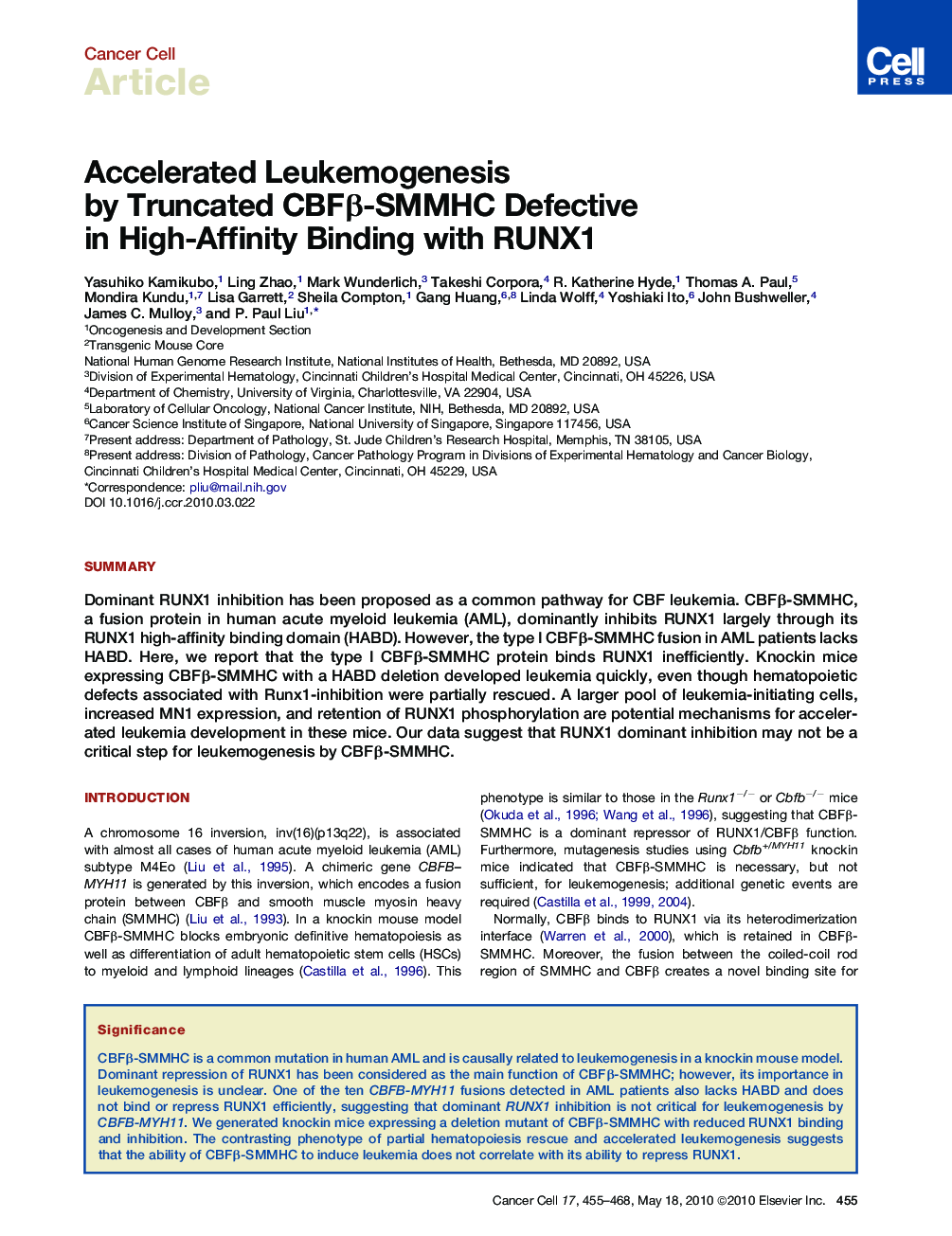| Article ID | Journal | Published Year | Pages | File Type |
|---|---|---|---|---|
| 2108347 | Cancer Cell | 2010 | 14 Pages |
SummaryDominant RUNX1 inhibition has been proposed as a common pathway for CBF leukemia. CBFβ-SMMHC, a fusion protein in human acute myeloid leukemia (AML), dominantly inhibits RUNX1 largely through its RUNX1 high-affinity binding domain (HABD). However, the type I CBFβ-SMMHC fusion in AML patients lacks HABD. Here, we report that the type I CBFβ-SMMHC protein binds RUNX1 inefficiently. Knockin mice expressing CBFβ-SMMHC with a HABD deletion developed leukemia quickly, even though hematopoietic defects associated with Runx1-inhibition were partially rescued. A larger pool of leukemia-initiating cells, increased MN1 expression, and retention of RUNX1 phosphorylation are potential mechanisms for accelerated leukemia development in these mice. Our data suggest that RUNX1 dominant inhibition may not be a critical step for leukemogenesis by CBFβ-SMMHC.
► A variant CBFβ-SMMHC in AML patients missing the HABD binds RUNX1 weakly ► Hematopoiesis is partially rescued in mice expressing a HABD-deleted CBFβ-SMMHC ► Leukemogenesis is accelerated in mice expressing a HABD-deleted CBFβ-SMMHC ► The variant CBFβ-SMMHC increases MN1 expression and retains RUNX1 phosphorylation
